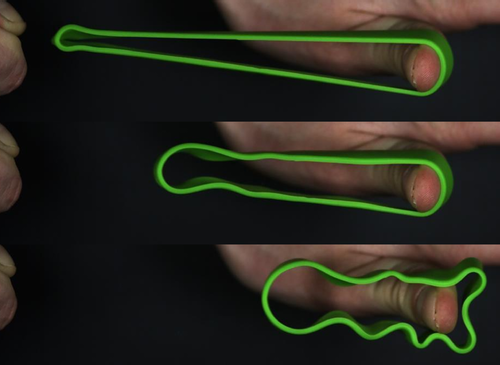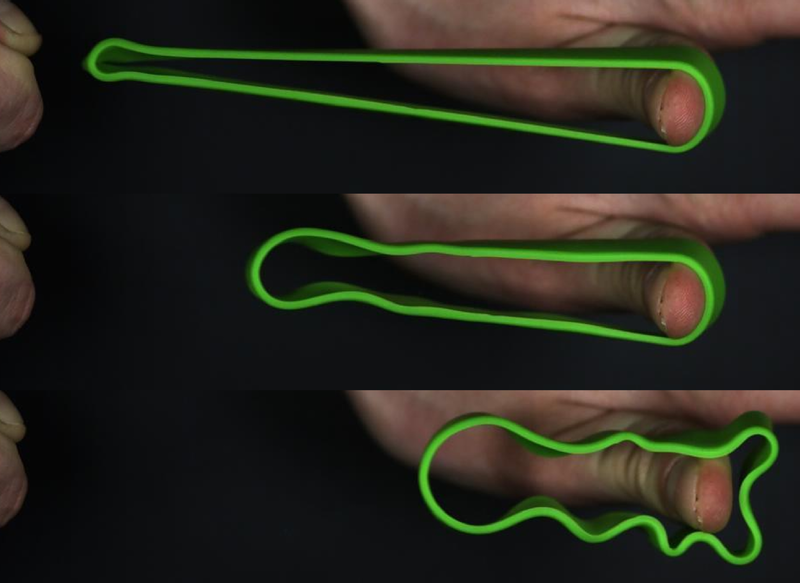Video—Slow-Motion Footage Captures Rubber Band Ripples
Given the ubiquity of rubber bands, it would be natural to think that physicists have fully described their behavior. But now researchers show, using a high-speed video camera, that a rubber band shot through the air develops waves that require additional theory to explain.
Most models describing the behavior of elastic materials, such as a strip of stretchy rubber, consider only the effects of stretching and inertia. But Alexandros Oratis and James Bird, both from Boston University, thought that a strongly curved material, like a stretched rubber band, could exhibit additional effects while in motion. To test their idea, the duo stretched rubber bands over either a thumb or a cylindrical post and then released them.
The videos show that after release, the band initially takes on the form predicted by previous models—a teardrop shape with straight sides. But as it moves, ripples develop at the rear of the band and propagate with a well-defined speed and wavelength. These ripples were not predicted in previous models. The researchers were able to replicate the shapes of the band and the properties of the ripples using a model that accounts for bending and thickness of the elastic material in addition to stretching and inertia.
The videos also show why the shooter’s thumb isn’t struck by the rubber band. The ripples reduce the tension around the thumb, allowing the thumb to drop quickly, before the rear of the band reaches it. The researchers say that their model could describe the behavior of myriad elastic objects from 100-meter-long slingshot rides at amusement parks to molecular slingshots for drug delivery.
This research is published in Physical Review Letters.
–Christie L. C. Ellis
Christie L. C. Ellis is a freelance science writer based in Amherst, Massachusetts.





